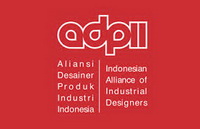Evaluasi Model Kirkpatrick terhadap Kegiatan Desain Camp #1: Bamboo for Creative Millennials
Abstract
Design Camp #1 is the national workshop for product design students which involve 28 stu participants from 14 public/private colleges in Indonesia. The theme of Bamboo for Creative Millennials was raised to encouraged the participants to work together with bamboo craftsmen at Sendari Bamboo Crafts Center, Sleman, D.I. Yogyakarta. As the first program carried out, Design Camp # 1 requires evaluative research so that the process of implementing the next activity can continue to be developed. The Kirkpatrick model is applied to find out four levels of evaluation, including reactions, learning, behavior, and results. The research method used is quantitative descriptive, while the data collection uses interview techniques and online surveys. The results of the reaction evaluation showed that 52.5% of participants were very satisfied with aspects of the implementation (design materials, craft mentors, organizers, and support of each college). Learning evaluation shows that participants can learn bamboo processing skills (75%) and knowledge of bamboo design (67.8%). Participants also showed good collaboration in the work process, even in the evaluation of behavior 38% of aspects of success were determined by a group of friends. Design Camp # 1 activity produced 10 prototypes and 67.8% of participants were interested in developing their design ideas. The evaluation results also showed that 60.7% of participants strongly agreed that this activity could support a career as a product designer.
Key words: design, evaluation, Kirkpatrick, bamboo
Keywords
Full Text:
PDFReferences
Badu, S. Q. (2012). Implementasi Evaluasi Model Kirkpatrick Pada Perkuliahan Masalah Nilai Awal Dan Syarat Batas. Jurnal Penelitian dan Evaluasi Pendidikan, Edisi Dies Natalis ke-48 UNY. 16. 102-129
Kirkpatrick, D. & Kirkpatrick, J. (2016). Evaluating Training Programs: The Four Levels, Berrett-Koehler Publisher
Komnenić, B., Borovnjak, A., Filek, S, & Velinovski, A. (2015). Practicing Design: Rethinking Design Education. Zagreb: Public Room Skopje
Paull, M., Whitsed, C. & Girardi, A. (2016). Applying the Kirkpatrick model: Evaluating an Interaction for Learning Framework curriculum intervention. Issues in Educational Research, 26 (3). 490-507
Rowe, A.,& Wong, K. (2011). Design pedagogy competencies: cross-cultural collaboration for a changing future. DesignEd Asia Conference 2011, Nov 29-30, Hong Kong. Retrieved from https://repository.vtc.edu.hk/ive-de-sp/26
Rönkkö, M.-L. & Aerila, J.-A. (2015). Children designing a soft toy: An LCE model as an application of the experiential learning during the holistic craft process. Techne Series: Research in Sloyd Education and Craft Science A, 22 (1). 44-58
Rönkkö, M.-L., & Lepistö, J. (2016). The craft process developing student decision making. Techne Series: Research in Sloyd Education and Craft Science A, 23 (1). 48-61
Sapienza, A., Goyal, P., & Ferrara, E. (2018). Deep Neural Networks for Optimal Team Composition. Proceedings of ACM. Retrieved from https://arxiv.org/pdf/1805.03285.pdf
Sudarto. (2016). Keterampilan dan Nilai sebagai Materi Pendidikan dalam Perspektif Islam. Jurnal Al-Lubab, 1 (1). 105-120
Sugiyono. (2012). Metode Penelitian Kuantitatif Kualitatif dan R&D. Bandung: Alfabeta.
Suryabrata, S. (2006). Metodologi Penelitian. Jakarta: Raja Grafindo Persada
Syahrum & Salim. (2012). Metodologi Penelitian Kuantitatif. Bandung: Ciptapustaka Media
Westbomke, J., Nyström, Sutter, R., & Bogaert, L. (2011). Intercultural Design Camp – Facing New Challenges In An International Cooperation Of European Universities. ICERI2011 Proceedings. 1189-1198. Retrieved from https://library.iated.org/view/WESTBOMKE2011INT
DOI: https://doi.org/10.24821/productum.v3i8.3815
Refbacks
- There are currently no refbacks.
p-ISSN 2477-7900 | e-ISSN 2579-7328

This work is licensed under a Creative Commons Attribution 4.0 International License.
Like & Follow Us










